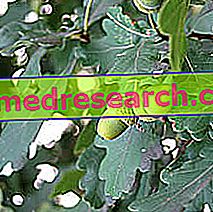
What is ReFacto AF?
ReFacto AF consists of a powder and a solvent to be mixed together to obtain a solution for injection. ReFacto AF contains the active substance moroctocog alfa.
What is ReFacto AF used for?
ReFacto AF is used for the treatment and prevention of bleeding in patients with haemophilia A (an inherited bleeding disorder). ReFacto AF can be given to patients of any age, including newborns.
The medicine can only be obtained with a prescription.
How is ReFacto AF used?
Treatment with ReFacto AF should be undertaken by a physician experienced in the treatment of haemophilia A.
ReFacto AF is given by injection into a vein over several minutes. The dose and frequency of injection vary depending on whether ReFacto AF is used to treat, prevent or reduce bleeding during surgery. The dose should be adjusted according to the severity and site of the bleeding or the type of surgery. For all information on how to calculate the doses, see the package leaflet.
Patients or their assistants can give injections of ReFacto AF as long as they have received the appropriate instructions.
How does ReFacto AF work?
The active substance in ReFacto AF, moroctocog alfa, is a blood clotting factor protein (a substance that promotes blood clotting). Haemophilia A is characterized by the lack of a protein called factor VIII, implicated in blood coagulation. Deficiency of factor VIII causes blood coagulation problems, such as bleeding in joints, muscles and internal organs. ReFacto AF, used to replace the missing factor VIII, removes the factor VIII deficiency and temporarily controls bleeding disorders.
Moroctocog alfa is not extracted from human blood, but is produced by a method known as "recombinant DNA technology": that is, it is obtained from a cell in which a gene (DNA) has been introduced which makes it capable of producing factor VIII of human coagulation.
How has ReFacto AF been studied?
ReFacto AF was first authorized with the name of ReFacto in April 1999, for treatment in patients with haemophilia A previously treated and in untreated patients. This authorization was based on the results of three main studies.
In February 2009, various changes were introduced to the way ReFacto is produced, including the elimination of the use of a protein called albumin, which is produced by human blood, from the production process. The name of the drug from ReFacto to ReFacto AF has also been changed.
Following these changes, the pharmaceutical company conducted a study to demonstrate that the body assimilates in the same way ReFacto and ReFacto AF. He also conducted two main studies on the efficacy of ReFacto AF: the first examined the prevention and treatment of bleeding episodes in 94 previously treated patients and the second the prevention of bleeding in 22 patients undergoing surgery.
What benefit has ReFacto AF shown during the studies?
Studies have shown that ReFacto AF is as safe and effective as ReFacto in the prevention and treatment of bleeding episodes in patients with haemophilia A.
What is the risk associated with ReFacto AF?
Patients with haemophilia A may develop antibodies (inhibitors) against factor VIII. In these cases ReFacto AF is not effective and bleeding control may be lacking. The most common side effect with ReFacto AF (seen in more than 1 patient in 10) is vomiting. For the full list of all side effects reported with ReFacto AF, see the Package Leaflet.
ReFacto AF should not be used in people who may be hypersensitive (allergic) to human coagulation factor VIII, to any of the other substances or to hamster proteins.
Why has ReFacto AF been approved?
The Committee for Medicinal Products for Human Use (CHMP) noted that ReFacto AF is comparable to ReFacto, the original form of the drug. The CHMP therefore decided that the benefits of ReFacto AF outweigh the risks for the treatment and prevention of bleeding in patients with haemophilia A (congenital factor VIII deficiency). The CHMP recommended the granting of a marketing authorization for ReFacto AF.
What measures are being taken to ensure the safe use of ReFacto AF?
In view of the gradual replacement of ReFacto with ReFacto AF on the market, the company that makes the drug will provide information packets to healthcare professionals who will prescribe or use ReFacto AF, to all associations of hemophilia patients in the European Union (EU), to patients taking ReFacto AF and laboratories that will monitor patients treated with ReFacto AF. These packages will include information on the differences between ReFacto and ReFacto AF, on the safe use of ReFacto AF, on how to report side effects, information on similar medicines available outside the EU, and finally reminds the patient to take ReFacto AF with him enough in case of travel.
Other information on ReFacto AF:
On 13 April 1999, the European Commission issued a marketing authorization for ReFacto, valid throughout the European Union. The holder of the marketing authorization for the medicine is Wyeth Europa Ltd. The marketing authorization was renewed on 13 April 2004 and 13 April 2009. On 18 December 2008, the name of the medicine was changed to ReFacto AF.
The full EPAR for ReFacto AF can be found here.
Last update of this summary: 04-2009.



